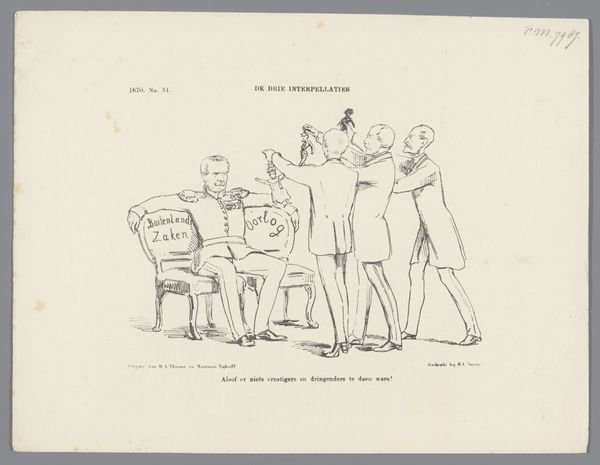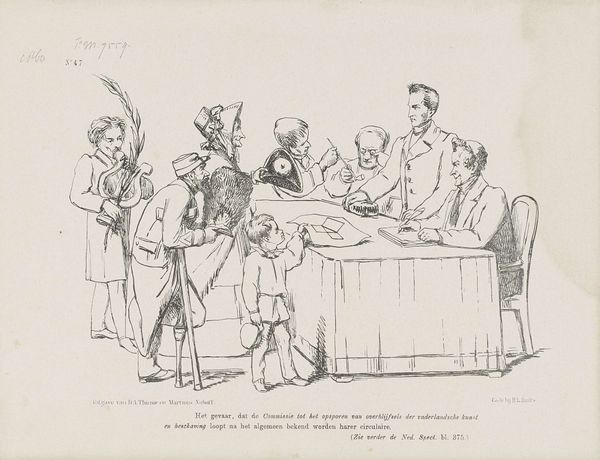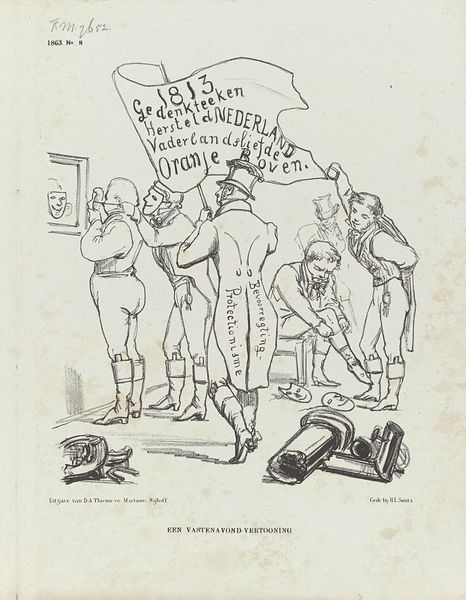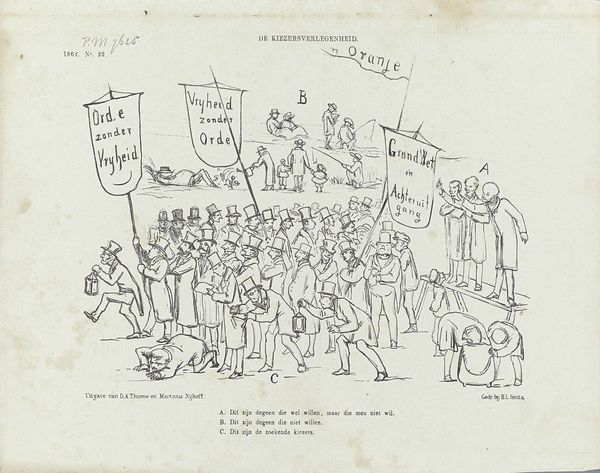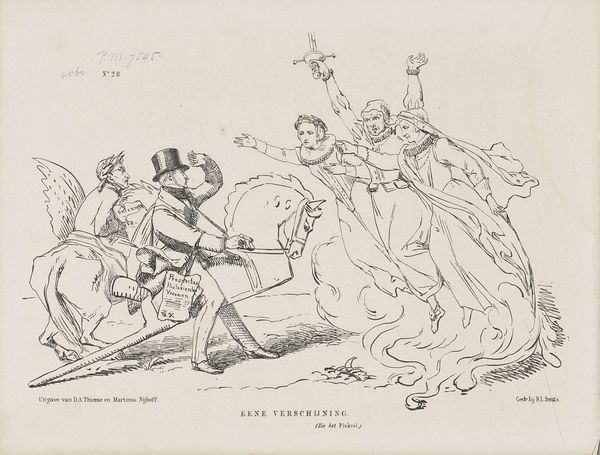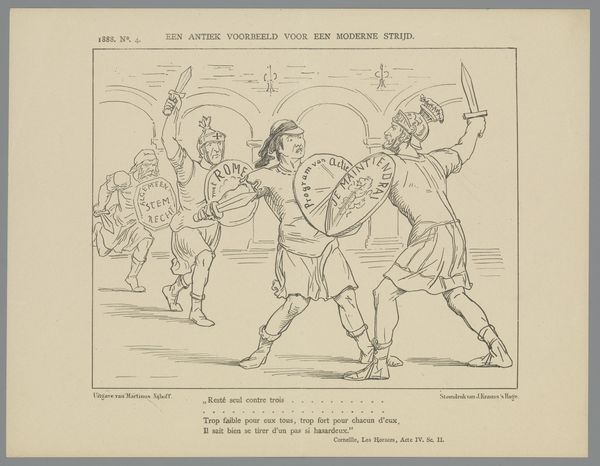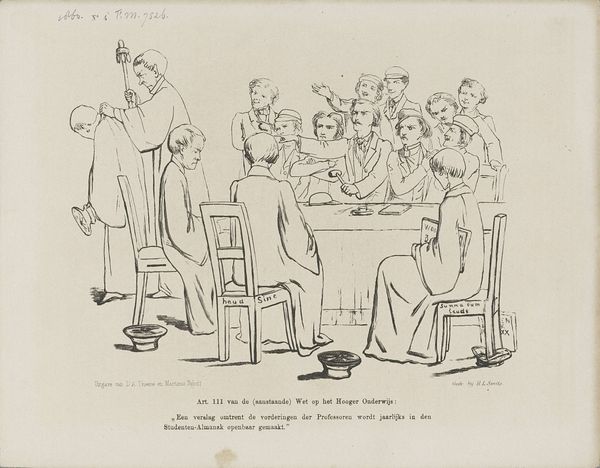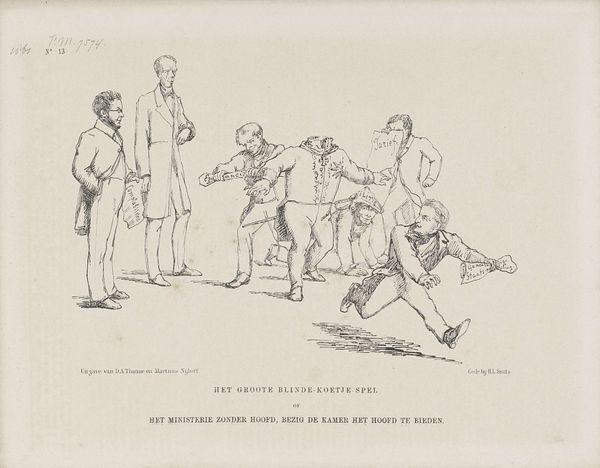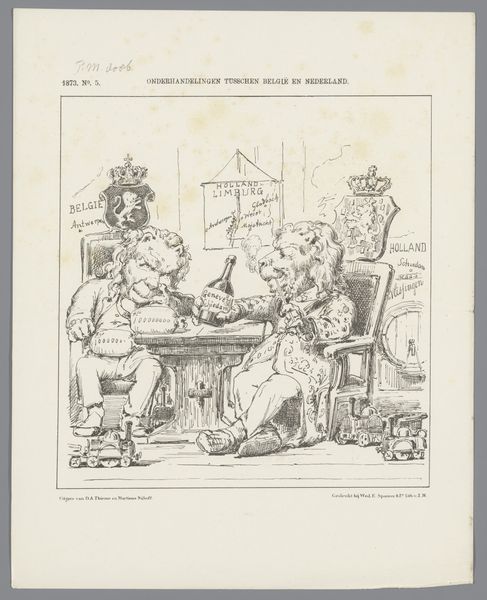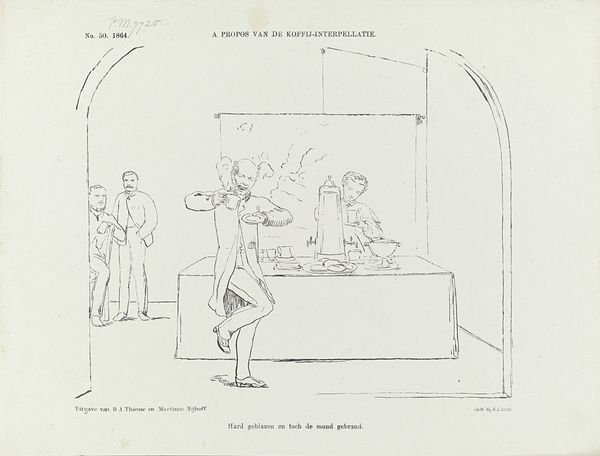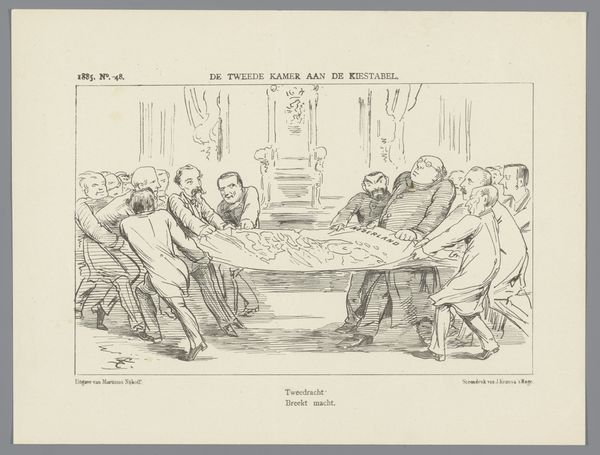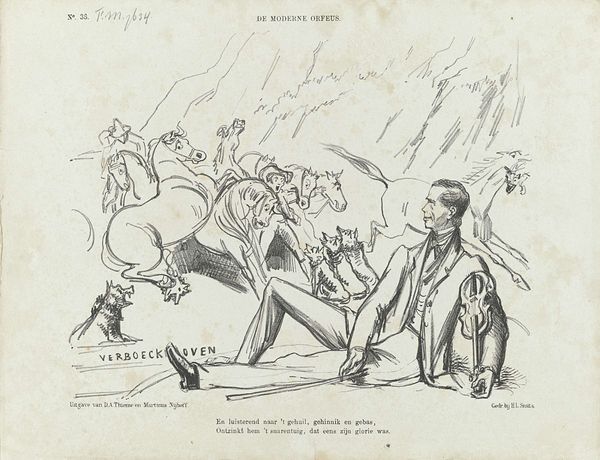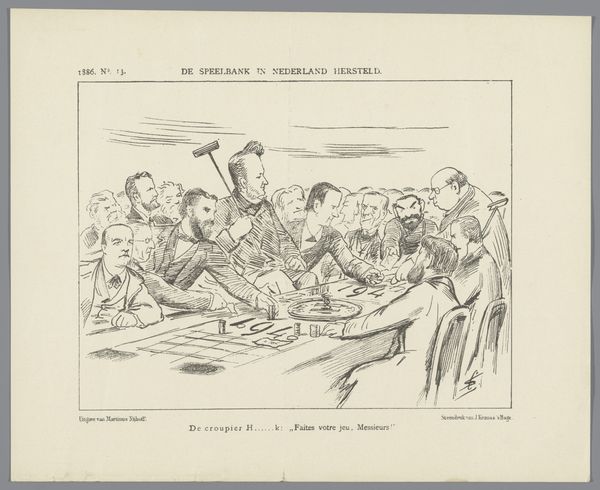
Dimensions: height 215 mm, width 275 mm
Copyright: Rijks Museum: Open Domain
Curator: Let's turn our attention to this rather intriguing print entitled "Spotprent op het mislukken van de Frankfurter Vorstendag, 1863," created in 1863 by Johan Michaël Schmidt Crans. Editor: My initial impression is one of profound disappointment, almost like observing the deflated aftermath of a grand spectacle. The figures are rendered with such stark, unwavering lines that their failure seems not just political, but existentially deflating. Curator: Exactly! Crans captured a pivotal moment in German history with remarkable economy of line. The "Frankfurter Vorstendag," or Frankfurt Princes' Day, was a failed attempt by various German princes to reform the German Confederation. He likely made this from a lithograph stone using greasy ink to achieve its satirical impact. Editor: And the materiality itself becomes a silent witness to this historical hiccup. The use of lithography—a technique that democratized printmaking—emphasizes the wide dissemination of this political commentary. This isn’t just a record of the event, it's meant to spark a response among its viewers, perhaps even fueling discontent. Curator: Notice the slumped figure to the right, utterly isolated, whilst to the left we see what seems like the key figures physically rebuffing this attempt to corral them? You can almost feel the frustration and futility. Editor: Absolutely! The almost frantic gesture in the throng contrasts so strikingly with the isolation and defeat depicted on the right, and those heavy crown embellishments can only add to the irony, can't they? What use is ornamentation, grandeur or symbol if the fundamentals aren’t resolved and in disarray. The material richness amplifies the political poverty. Curator: Perhaps for Crans, it served as a warning about the perils of disunity and the consequences of failed ambition. Art making that comment a powerful medium in political discourse. Editor: Indeed. Looking at the print, its very existence seems like a rebellion, or at least an incisive remark cast upon the shifting foundations of German political reality. I guess in our examination of the print we uncover how its creation reveals that these pieces function more as records than artistic statements, but instead both... I’m left feeling quite differently to my initial perception of mere disappointment!
Comments
No comments
Be the first to comment and join the conversation on the ultimate creative platform.
